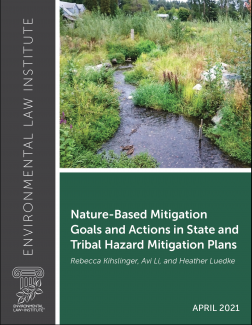
Nature-based strategies are actions that use the conservation or restoration of nature, such as ecosystems like wetlands, or green infrastructure projects, to address the risks from natural hazards. Nature-based mitigation strategies can help reduce the likelihood of future hazards occurring and minimize negative impacts when they do occur. These strategies also provide environmental and social co-benefits, such as increasing habitat and biodiversity, and creating recreational spaces for communities. This study evaluates to what extent state hazard mitigation plans are incorporating nature-based goals and actions, such as the conservation and restoration of wetlands and floodplains and the use of green infrastructure. The hazard mitigation plan must identify, evaluate, and prioritize cost-effective and feasible mitigation actions and activities that can address the risks posed by natural hazards. The specific actions included in the mitigation strategy provide the basis for proposing and applying for funding for specific mitigation projects. We identified the range of practice as well as model examples of plan language that could be used by states in future iterations of their plans. We conclude with some observations on the state hazard mitigation plan development process and how planning elements can serve as opportunities to stimulate states and tribes to identify and use nature-based strategies.